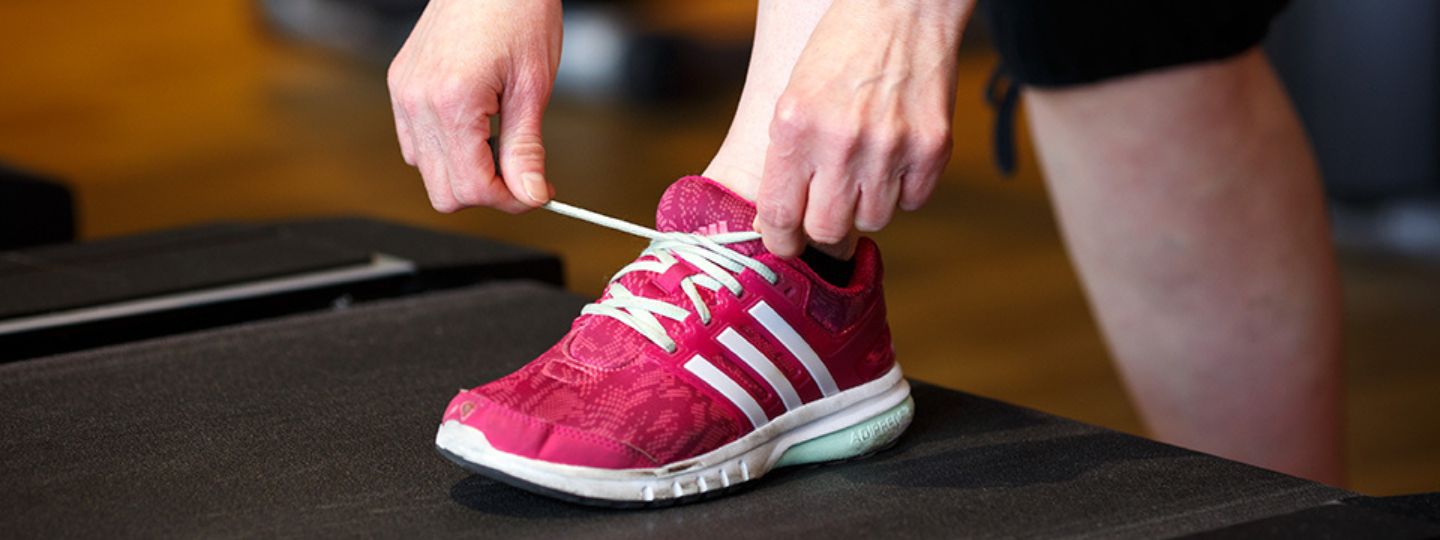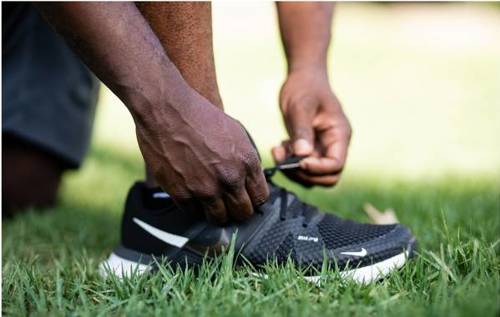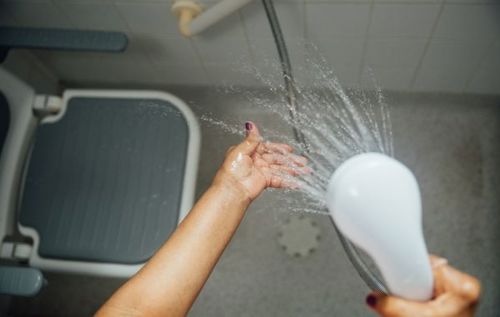Shoes for arthritis: Tips on footwear and footcare if you're in pain
22 March 2023
Arthritis causes pain, inflammation and swelling in the joints of our body – and it makes sense that it can affect the feet too. After all, each foot in our body has around 26 bones and 33 joints. That means, nearly a quarter of the body’s bones can be found in our two feet.
Arthritis symptoms in feet
Most people will experience pain in and around their feet at some point in their lives. But if you have arthritis, you might be more prone to foot problems. For example:
- If you have gout, you might experience pain, swelling and inflammation in the base of your big toe.
- If you have psoriatic arthritis, you might get swollen toes. This is known as dactylitis.
- If you have rheumatoid arthritis, you might first feel symptoms in the small joints in your hands and feet.
- Other types of arthritis, such as axial spondylarthritis and osteoarthritis, can also lead to pain and swelling in the feet.
How can I help my foot pain if I have arthritis?
The good news is there are plenty of ways we can look after our feet, from wearing comfortable, fitting shoes to make footcare a daily habit.
To give you a hand, we asked podiatry expert Dr Helen Branthwaite for her advice. She is the Musculoskeletal lead at the Royal College of Podiatry, Senior lecturer at Staffordshire University and a musculoskeletal practitioner.
Podiatrists are healthcare professionals who treat foot problems. They can tell you how to best look after your feet.
Best shoes for arthritis
Wearing good, supporting and properly fitting shoes is one of first steps to looking after your feet. But if you don’t know what to look for, Helen has some advice.
“The main damage that’s done to our feet is by wearing footwear that’s too small, too tight or too flat
Sturdy sole
The first step is to look for something with the right sole. “People might choose a trainer that’s got a very soft heel thinking it’s a sensible shoe because it’s soft and comfortable,” Helen says. “But they can sometimes be more damaging because it increases the load on the heel.”
Helen compares it to walking on a soft, sandy beach. “To start with it would feel comfortable. But if I asked you to then you to walk for a while, it would start to feel painful.” For that reason, look for a sole that bends only near the toes, and does not collapse in your hand.
Comfortable fit

She also recommends making sure that the shoe is roomy in the toe box. This is the part of the shoe which surrounds your toes.
“More often than not, this area is shallow,” she explains. “So, if you’ve got arthritis and your joints have changed and thickened, it can put more pressure on your toes.”
It’s also worth picking shoes that have a removable insole. That way, you can put in your own orthotics in without making the shoe too tight. Orthotics are devices such as insoles and splints, that support weakened joints, reduce pain and improve your mobility.
Avoid high and flat shoes
Helen also recommends staying clear of high heels. “If you wear any shoes that are above 4cm high, it will transfer your body weight towards the front of your foot and that can cause problems.”
On the flipside, Helen says that very flat shoes, like ballet pumps, are some of “the worse culprits” when it comes to foot pain. So, it’s worth picking shoes where the sole at the heel is higher than at the front, so there is an incline to the shape of the sole.
Balancing fashion and comfort
We all deserve to look and feel our best. But try to prioritise comfort and fit first.
“Image plays a massive part in footwear choice,” she says. “For example, an older gentleman that’s been a professional might want to wear a stiff, formal shoe because that’s what they’ve always worn.
“But that can cause problems, particularly if they've developed arthritis, because the fit of the shoe can be quite tight and snug.”
You don’t have to forfeit your personal style though. Thankfully there are quite a few shoes on the market that balance fashion and comfort.
What is footcare?
Arthritis not only affects the joints in your feet, but it can also affect your toenails and the skin around your feet too, especially if there is a joint which is bent.

“Nail and skin problems can be extremely painful for patients, but podiatrists can help with that by providing splints to support the toes and treating nail problems and calluses,” says Helen.
There are plenty of ways you can look after your feet yourself too. For example, you could:
- Wash your feet in warm water every day.
- Reduce patches of hard skin, using a foot file or pumice, then apply an emollient. Emollients are moisturising treatments that you can apply directly to the skin to soothe and hydrate it.
- Cut your toenails then file them in line with the natural shape of your toe, every 6-8 weeks.
Staying active can also make a difference. Not only will it improve the circulation in your feet, but it’ll also strengthen the soft tissue that supports your joints.
“One of the problems the majority of us have is that we forget about it for the rest of the day,” says Helen. “Doing daily exercises such as foot scrunches, splaying the toes, lifting the arch and getting your toes wiggling is advisable to keep the foot mobile and strong.”
Exercises for toes, feet and ankles
Tips for shoe shopping
Is it worth spending a lot of money on shoes? Not necessarily.
“The thought that you'll get good shoes if you pay a lot of money is a myth,” Helen explains. “It's about knowing what you need for your feet and that's where podiatrist comes into play.
“They say to patients: ‘This is the problems you have in your foot, so you need this type of shoe’. It’s not about brands. It’s about what features of a shoe are essential for their feet.”
Another worry people have is about buying shoes online. But Helen says that “buying online gives you a broader scope of choices, particularly if you need extra wide shoes for example as they tend to sell these online.”
Just make sure you try them on, walk around inside, and check that they fit.
It’s worth getting your feet measured regularly but Helen says that we shouldn’t be too fixed on this number because sizes can vary widely from store to store.
“Recent research showed that some trainers aren’t even made in the same factory. So, they can have different sizing. Don’t think ‘my feet are a size 6 so I always need to have a size 6 shoe." Instead, try on shoes and check if they’re comfortable.
Get help
It varies from place to place, but if you would like to see a podiatrist you can refer yourself or ask a healthcare professional to refer you, such as a GP, physiotherapist, or your rheumatology team.